Demand Forecasting AI Becomes More Sophisticated with Promotion Data

For companies that sell products directly to B2C consumers, promotions such as price discounts are the most common and reliable method for increasing sales and managing inventory. Impactive AI recently conducted a Proof of Concept (PoC) with a leading domestic furniture company to perform demand forecasting by incorporating promotion data. This document introduces how promotion data, when combined with prediction models, significantly influences the results.
The Importance of Promotion Data Affecting Sales Volume
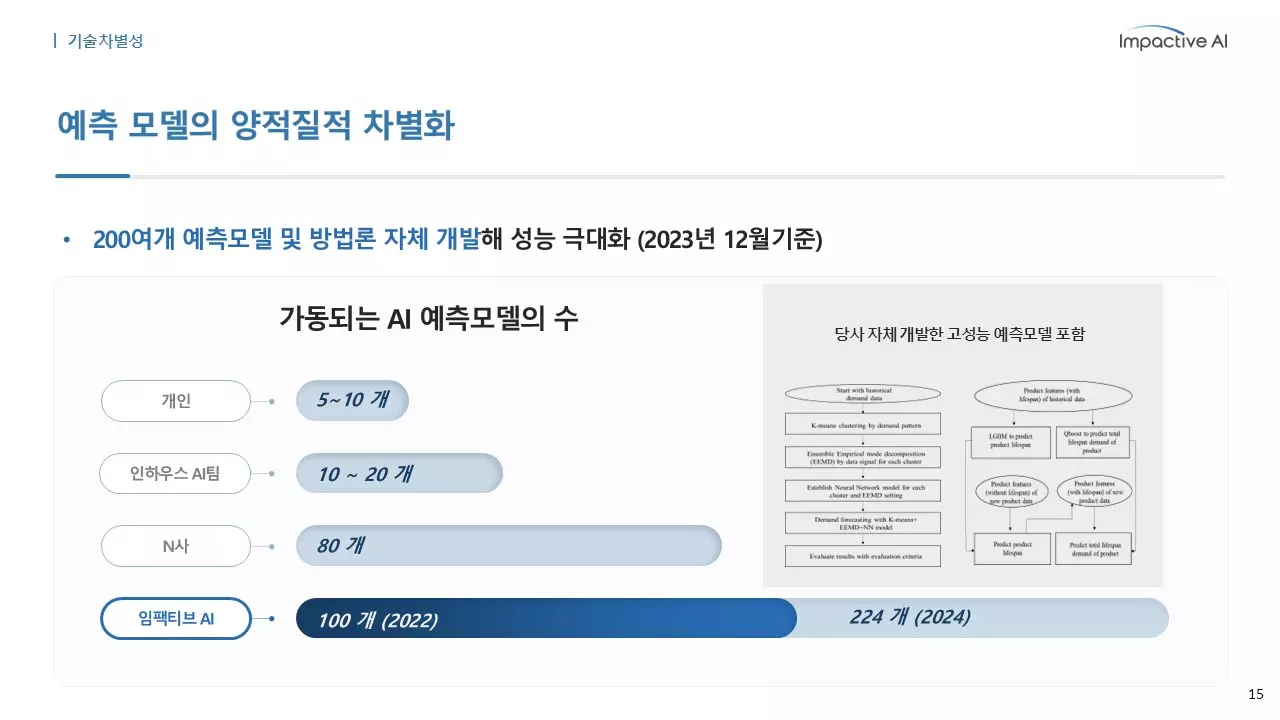
In this furniture product sales forecasting PoC project, we competitively tested over 200 machine learning and deep learning candidate models. The results showed that when promotion data was included, the AI model's accuracy improved by up to 49% compared to when it was not. This is a good example demonstrating the importance of promotion data as a factor influencing sales, and furthermore, the importance of diligent management.

Notably, optimized models were selected for each of the 318 forecasting units, combining 159 product codes with 2 sales channels. This signifies the implementation of a customized promotion effect prediction system that reflects the specific characteristics of each product group and channel, rather than a simple universal model. In B2C businesses targeting general consumers, promotions are one of the most powerful tools for increasing sales. In other words, the more systematically promotion data is managed and recorded by businesses, the more the AI's prediction performance will improve, highlighting the necessity of systematic promotion data management.
Feature Selection for Successful Promotion Data Integration
Comparison of Sales Volume Prediction Graphs with and without Promotion Data


Comparing the graphs (left: promotion data not reflected - right: promotion data reflected), the performance difference is even clearer. Essentially, when promotion data is available, the model more effectively reflects the variability in the sales volume graph. Especially for 'C Sofa,' when promotion data was not available, the red solid line in the test set section was almost flat, whereas with promotion data, the model captured the fluctuations in the graph much better. Commonly used promotion information includes type, duration, and discount rate.
3-Layer Variable System and Promotion Effect Prediction Accuracy
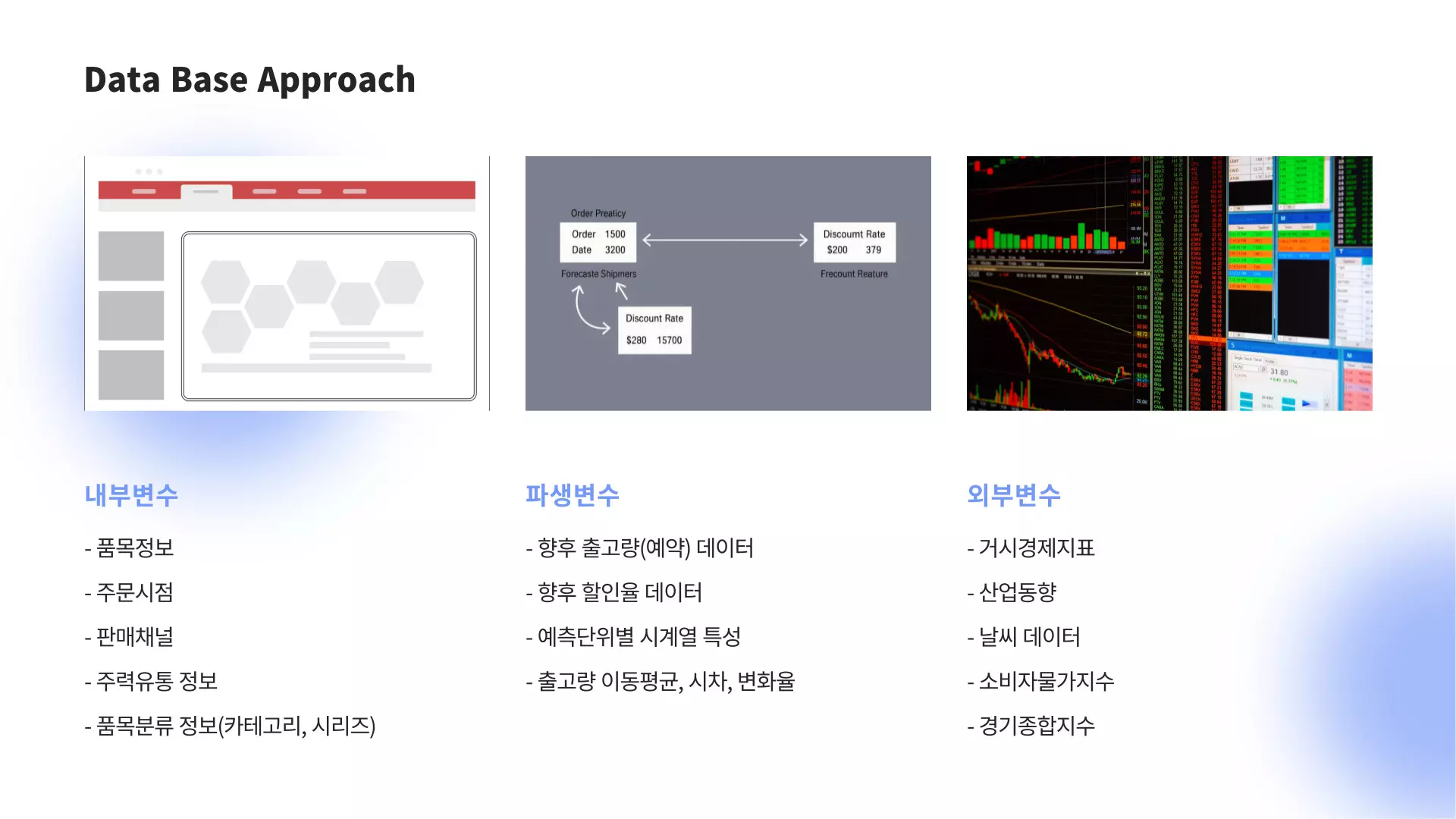
A systematic data architecture is essential for high-performance promotion effect prediction. In this PoC, we built a 3-layer variable system. The internal variable layer includes product code information, sales channel information, key distribution information, and hierarchical product classification information from category to series Lv1-3. These basic business entities are key factors that determine the fundamental patterns of promotion responsiveness.
Here, the derived variable layer can be considered the core of promotion effect prediction. Discount information and shipment reservation information per prediction unit directly reflect future promotion plans and their expected effects. Furthermore, time series transformation variables such as moving averages, lags, and rates of change capture the delayed effects and persistence of promotions. In the external variable layer, we utilize macroeconomic indicators such as the Consumer Price Index, the Retail Sales Index of the Composite Leading Indicator, the number of employed persons, and the Coincident Composite Index. These provide a macroscopic context for promotion effects and reflect changes in promotion sensitivity according to economic conditions.
4-Stage Modeling Methodology and Promotion Effect Prediction System
Impactive AI's Deepflow utilized a Model Base Approach that competitively evaluates the performance of approximately 200 machine learning and deep learning candidate models to select the optimal model. The core models used in modeling are broadly categorized into Boosting Regressors (such as LightGBM, XGBoost, CatBoost) and Time Series models (such as ARIMA, ARCH, TBATS). Boosting models are stable even with small amounts of data and can effectively learn interactions between various variables. Time Series models, on the other hand, have low dependence on external variables and effectively capture the time series characteristics of the prediction target.

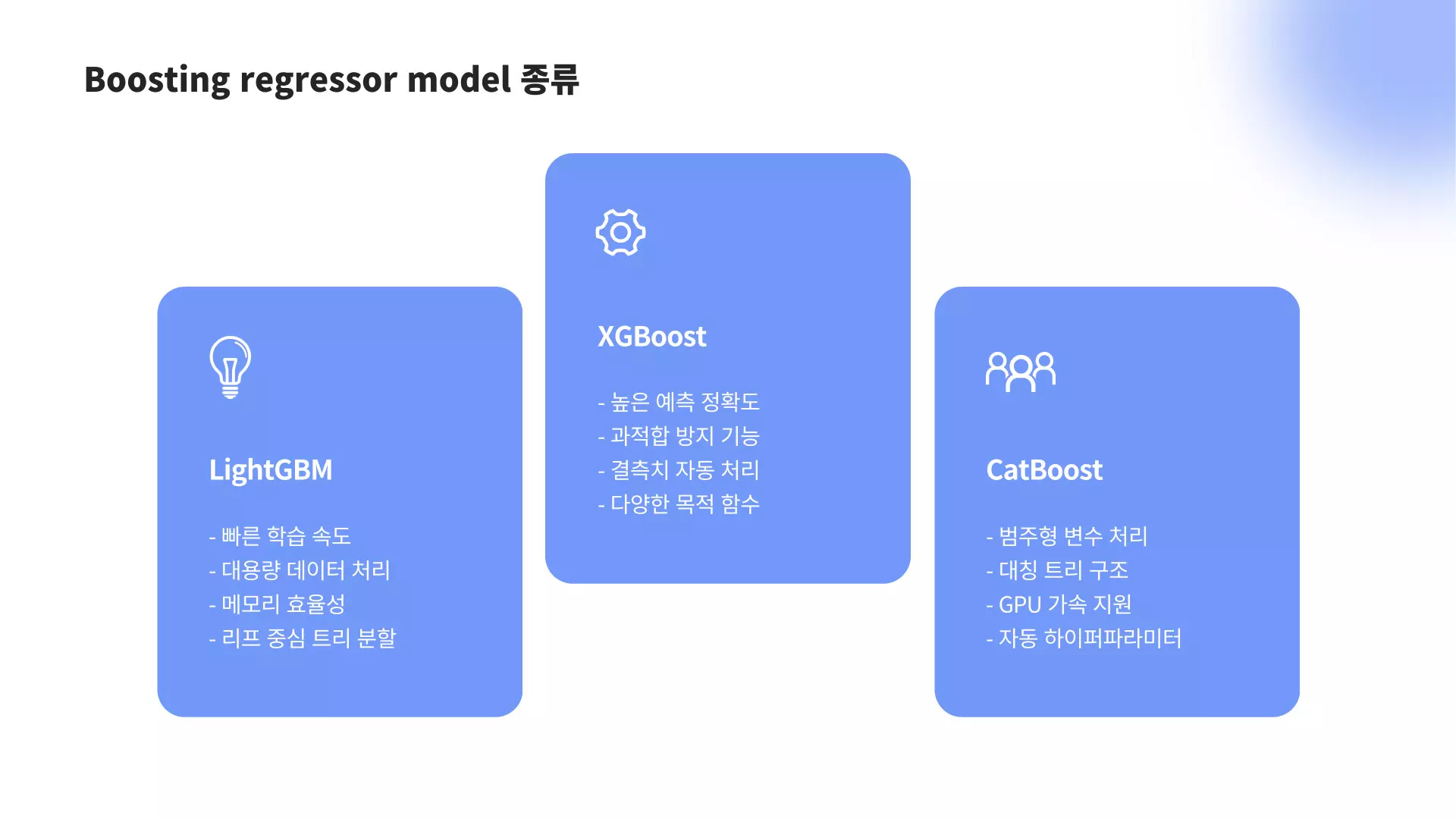
Boosting Regressor Model Types
- LightGBM: Fast training speed, handles large datasets, memory efficient, leaf-wise tree splitting.
- XGBoost: High prediction accuracy, overfitting prevention, handles missing values, diverse objective functions.
- CatBoost: Categorical variable handling, symmetric tree structure, GPU acceleration support, automatic hyperparameter tuning.
Main Time Series Model Types
- ARIMA: Autoregressive Integrated Moving Average, trend and seasonality analysis.
- ARCH: Autoregressive Conditional Heteroskedasticity, volatility prediction model.
- TBATS: Trigonometric, Box-Cox ARMA, Trend Seasonal, handles complex seasonality.
Based on this, Basic Modeling independently builds an optimal model for each prediction unit, while Hierarchical Modeling utilizes the hierarchical structure of data to learn commonalities and differences between layers. Cluster-Based Modeling clusters similar items based on their individual characteristics and time series information for modeling. In the final Ensemble Modeling stage, the prediction results of the various models built previously are combined to secure higher prediction accuracy and stability compared to a single model.
Real Business Outcomes and Promotion Effect Prediction ROI
Business Value of 14-49% Performance Improvement
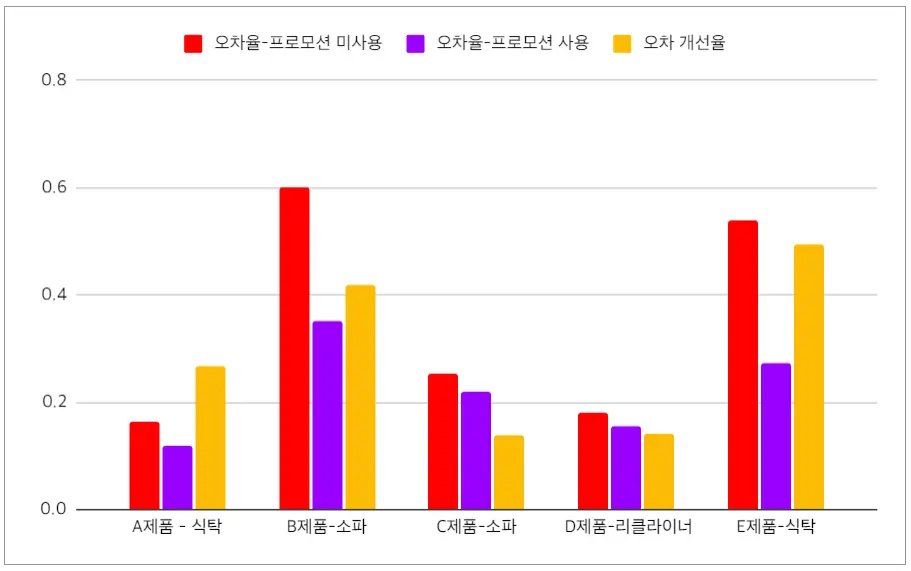
The 14-49% performance improvement achieved by the model incorporating promotional variables goes beyond simple technical indicators, creating direct business value. An average prediction accuracy improvement of over 30% across 318 prediction units leads to inventory optimization, increased sales, and enhanced marketing efficiency. Accurate promotion effect prediction can significantly reduce the risk of out-of-stock situations during promotion periods. For high-value products like furniture, the opportunity cost due to stockouts is very high, and a 30% improvement in prediction accuracy substantially reduces such losses. Furthermore, it can reduce warehousing costs due to excess inventory and losses from inventory disposal. Especially for highly seasonal furniture products, it is crucial to accurately predict a sharp drop in demand after promotions to maintain appropriate inventory levels.
Channel-Specific Differentiated Promotion Strategies
Building separate prediction models for online and offline channels is an essential strategy in the omnichannel era. Because customer characteristics and purchasing patterns differ between channels, the same promotion can have different effects. In online channels, price comparison is easy, and immediate purchase decisions are made, while in offline stores, a more cautious purchasing process involving experience and consultation occurs. These differences significantly impact the optimization of promotion timing, discount rates, and duration.
Future Enhancement Direction: Analyzing the Intensity of Promotion Effects
How will sales volume change depending on the intensity of promotion application? As a direction for future enhancement, we plan to analyze the change in sales volume according to the intensity of promotion application more precisely. Our goal is to help establish optimal promotion strategies by breaking down how promotion intensity factors—such as discount rate, promotion duration, and promotion type (e.g., discount, free gift, bundle sale)—actually affect sales volume. To achieve this, Deepflow will utilize a deep modeling approach capable of learning the nonlinear and complex relationship between promotion intensity and sales volume. This will enable companies to make data-driven strategic decisions that most efficiently use their promotion budget while simultaneously achieving target sales volumes.
Conclusion: Scientifically Based Promotion Strategies
The effectiveness of promotion data confirmed in this furniture product sales volume prediction PoC will be a significant milestone in the digital transformation of companies within the retail industry. We achieved a 14-49% performance improvement through competitive experiments with over 200 models and a 4-stage modeling methodology, which is empirical evidence of technological innovation and business value creation. Particularly, the customized approach of selecting optimal models for each of the 318 prediction units is a step forward that overcomes the limitations of uniform methods. The application of Cluster-based modeling to the largest number of items demonstrates the practical value of similarity-based learning. Moving forward, we plan to advance our service beyond prediction to simulate the effects of promotions in advance, transforming it into an intelligent system that automatically proposes optimal promotion scenarios for achieving goals. Impactive AI plans to make its next-generation AI prediction system, which combines real-time simulation prediction and promotion intensity analysis, available to all retail industries.


.svg)
%202.svg)
.svg)

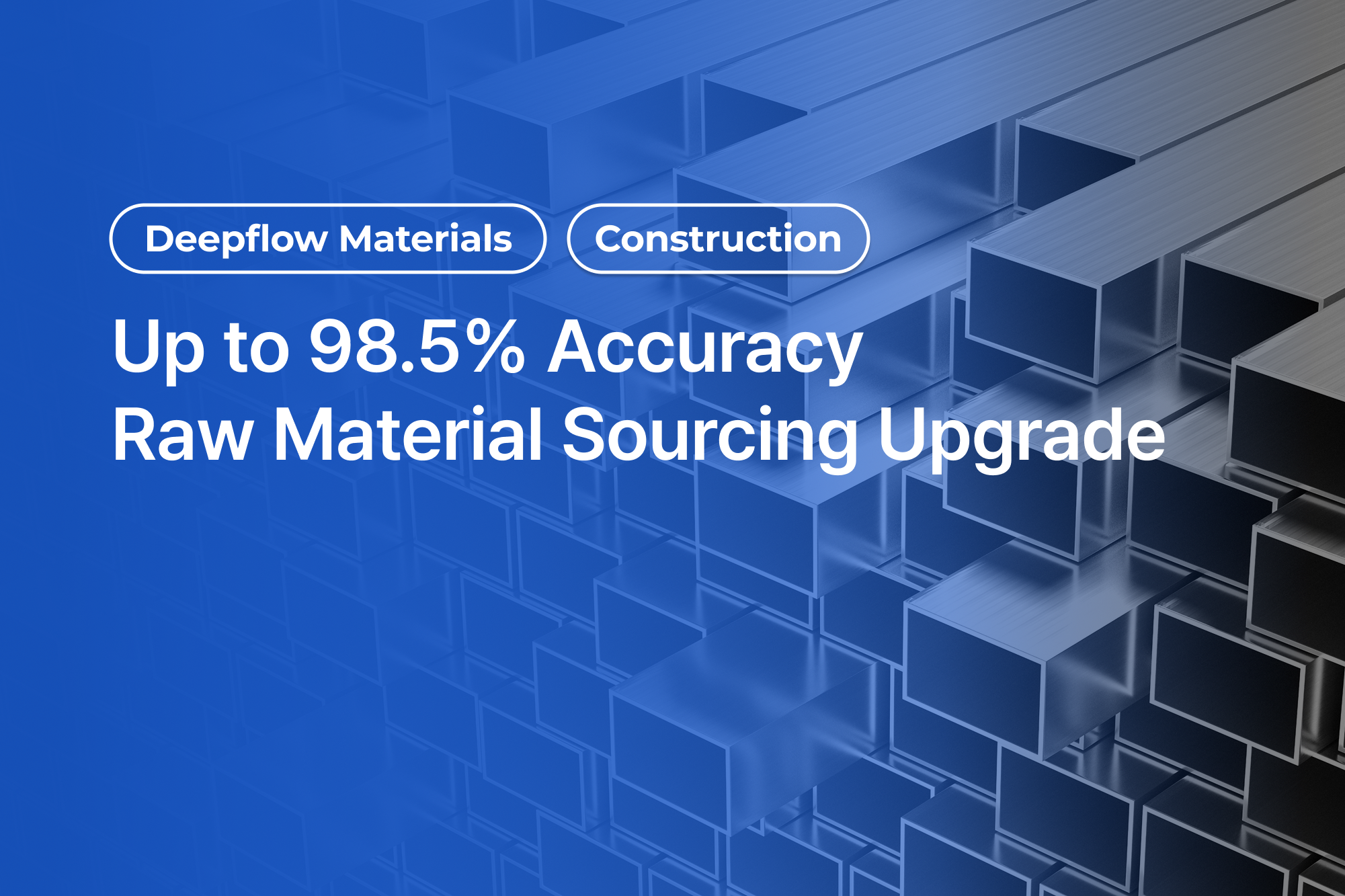
.svg)








